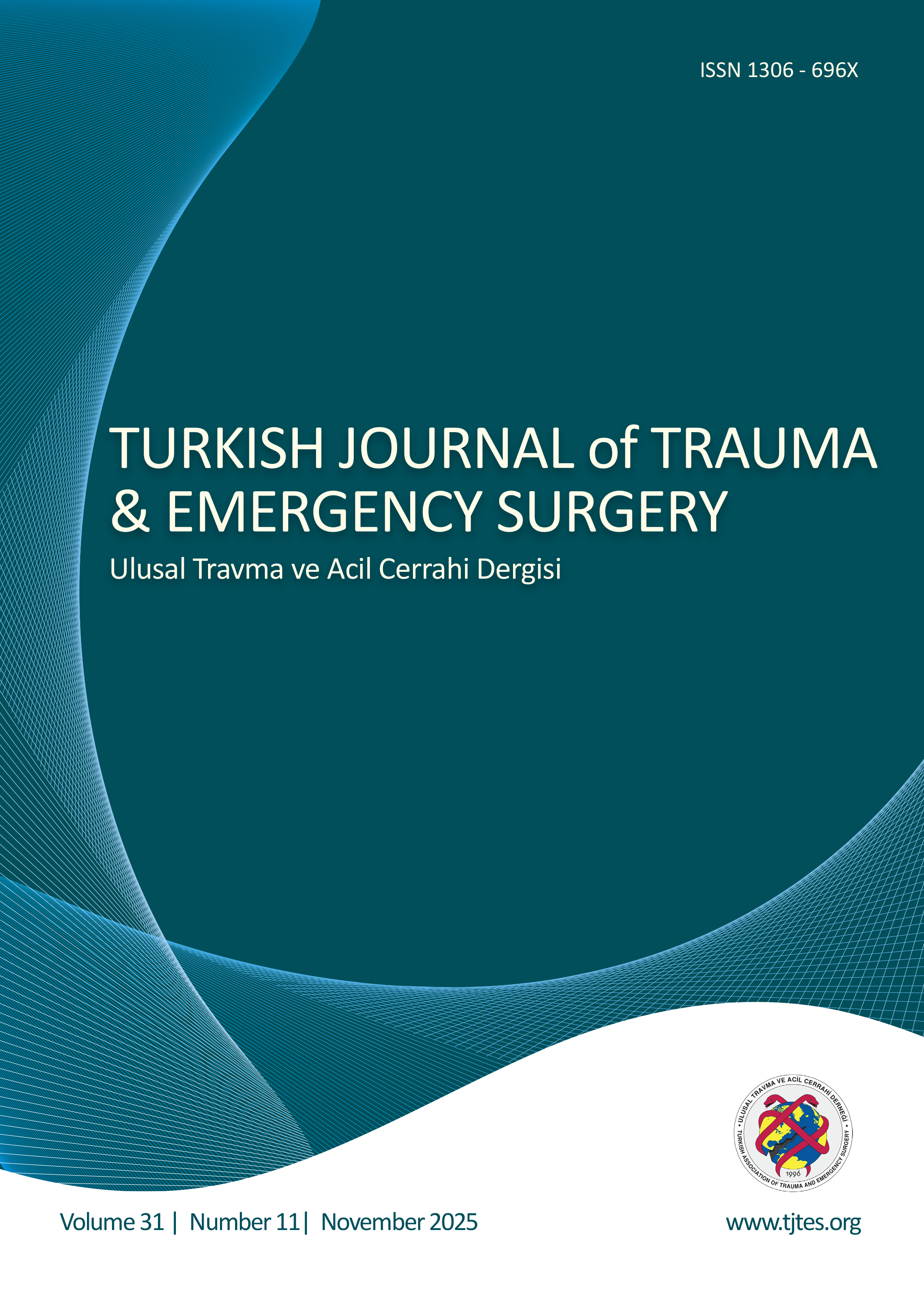Quick Search
Neuroendocrine tumor of the appendix: Twelve years of results from a single institution
Seracettin Eğin1, Gülçin Kamalı2, Sedat Kamalı1, Berk Gökçek1, Metin Yeşiltaş1, Semih Hot1, Dursun Özgür Karakaş11Department of General Surgery, University of Health Sciences, Okmeydanı Training and Research Hospital, İstanbul-Turkey2Department of Pathology, University of Health Sciences, Okmeydanı Training and Research Hospital, İstanbul-Turkey
BACKGROUND: The aim of this study was to investigate the incidence of appendiceal neuroendocrine tumors (NET) in an acute appendicitis cohort, as well as to investigate the behavioral form of the tumor. Our secondary aim was to investigate survival in patients with appendiceal NET.
METHODS: Between February 2006 and June 2018, 6518 appendectomies were performed for acute appendicitis in the department of surgery, University of Health Sciences, Okmeydanı Education and Research Hospital, İstanbul, Turkey. The medical records of these consecutive 6518 appendectomy patients were evaluated retrospectively. After the histopathological analysis, a total of 22 patients were identified as cases of appendiceal NET. These patients were included in the study. A retrospective analysis of data including gender, age, intraoperative surgical findings, duration of postoperative follow-up and survival, tumor localization, the diameter of the tumor, tumor grade, invasion, surgical margin, and stage of the tumor was performed.
RESULTS: The incidence of appendiceal NET was 0.33%. Eleven patients were diagnosed as primary pathological stage pT1aN0M0 according to the European Neuroendocrine Tumor Society guidelines. One patient was diagnosed as primary pathological stage pT1bN0M0, and 10 patients were diagnosed as primary pathological stage pT2N0M0. The median tumor diameter was 7.6 mm. There was no patient with a tumor diameter greater than 20 mm.
CONCLUSION: The incidence of appendiceal NET in our study is consistent with that stated in the literature. The results of our research suggest that further surgical procedures for NETs that occur coincidentally in patients of the AA cohort are often unnecessary. In addition, the study revealed that disease-free survival (100%) was good over a mean follow-up of 59.2 months.
Apendiksin nöroendokrin tümörü: Bir kurumun 12 yıllık sonuçları
Seracettin Eğin1, Gülçin Kamalı2, Sedat Kamalı1, Berk Gökçek1, Metin Yeşiltaş1, Semih Hot1, Dursun Özgür Karakaş11Sağlık Bilimleri Üniversitesi, Okmeydanı Eğitim Ve Araştırma Hastanesi, Genel Cerrahi Kliniği, İstanbul2Sağlık Bilimleri Üniversitesi, Okmeydanı Eğitim Ve Araştırma Hastanesi, Patoloji Laboratuvarı, İstanbul
AMAÇ: Akut apandisit tanısıyla apendektomi yapılan hasta topluluğunda apendiks nöroendokrin tümörlerinin (NET) görülme sıklığını ve tümörün davranış şeklini araştırmayı amaçladık. İkincil amacımız apandisiyel NETli hastalarda sağkalımı araştırmaktır.
GEREÇ VE YÖNTEM: Şubat 2006Haziran 2018 tarihleri arasında Sağlık Bilimleri Üniversitesi İstanbul Okmeydanı Eğitim ve Araştırma Hastanesi Genel Cerrahi Kliniğinde akut apendisit tanısıyla 6518 apendektomi uygulandı. Bu ardışık 6518 apendektomi hastasının tıbbi kayıtları geriye dönük olarak değerlendirildi. Histopatolojik analizlerden sonra toplam 22 hasta apendiks NET olarak tanımlandı. Bu hastalar çalışmaya dahil edildi. Cinsiyet, yaş, ameliyat sırasında cerrahi bulgular, ameliyat sonrası takip süresi ve sağkalım süresi, tümör lokalizasyonu, tümör çapları, tümör derecesi, invazyon, cerrahi sınır ve tümör evresi gibi geriye dönük bir veri tabanı elde edildi.
BULGULAR: Apendiks NETlerinin görülme sıklığı %0.33 idi. On bir hastaya Avrupa Nöroendokrin Tümör Derneği Kılavuzuna göre primer patolojik evre pT1aN0M0 tanısı konuldu. Ayrıca bir hastaya primer patolojik evre pT1bN0M0 ve on hastaya primer patolojik evre pT2N0M0 tanısı konuldu. Ortalama tümör çapı 7.6 mm idi. Tümör çapı 20 mmden daha büyük olan herhangi bir hasta yoktu.
TARTIŞMA: Çalışmadaki apendiks NET görülme sıklığı literatür ile uyumludur. Çalışmanın sonuçları akut apandisit hastalarında rastlantısal olarak ortaya çıkan NETler için daha ileri cerrahi işlemlerin gereksiz olduğunu göstermektedir. Buna ek olarak, çalışma hastalıksız sağkalımın (%100), ortalama 59.2 aylık takipte iyi olduğunu göstermektedir.
Manuscript Language: English




